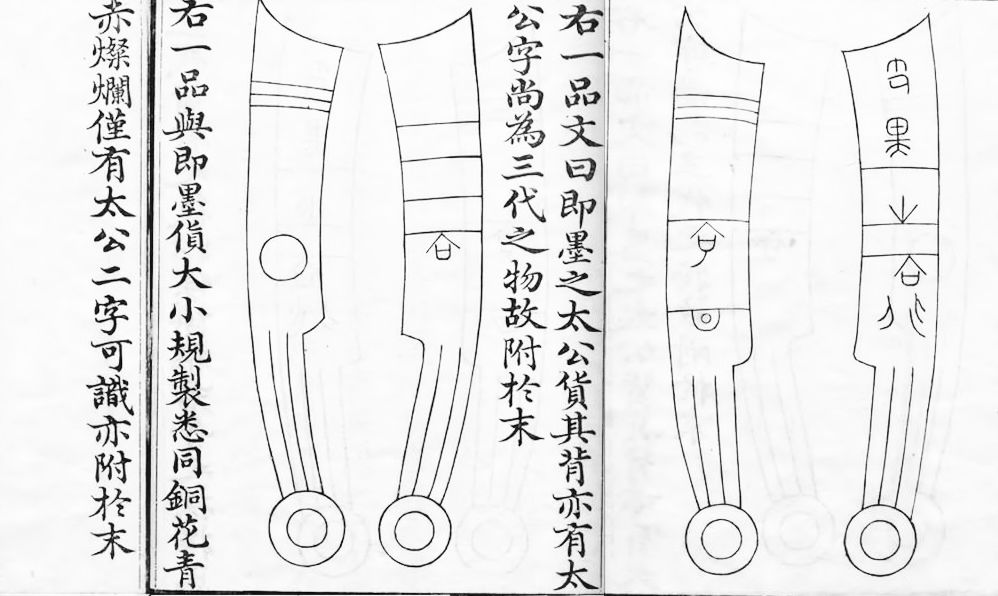Gujin daiwen lu 古金待問錄 is an album of ancient coins compiled during the high Qing period 清 (1644-1911) by Zhu Feng 朱楓 (1695–c. 1781), courtesy name Jinyi 近漪, style Paishan 排山, from Qiantang 錢塘 (today part of Hangzhou 杭州, Zhejiang). He also compiled a book on ancient tiles, Qin-Han wa tuji 秦漢瓦圖記, and a book on seals, Zhushi yinzheng 朱氏印徵.
His coin book has a length of 5 juan with an appendix and presents drawings of 116 coins from the pre-imperial period. While the major part of the album (juan 3-5) shows ancient knife-shaped coins (gudao 古刀) from the Warring States period 戰國 (5th cent.-221 BCE), the first fascicle presents fictional objects, mainly spade-shaped coins (bubi 布幣) that he and his contemporaries dated to the mythological times of the rulers Tai Hao 太昊 (Fu Xi 伏羲), Shen Nong 神農 or the Yellow Emperor (Huang Di 黃帝). The fifth fascicle, titled "Remainders" (Yulu 餘錄), is a discussion of coin history with many speculative aspects.
The book was printed in 1769. It is found in the series Zhaodai congshu 昭代叢書, Houzhibuzuzhai congshu 後知不足齋叢書 and Xuxiu siku quanshu 續修四庫全書.
Zhu also published a continuation of his book, Gujin daiwen xulu 古金待問續錄, with a length of 2 juan. It was printed in 1780 and was first published in the series Zhongguo qianbi wenxian congshu 中國錢幣文獻叢書.
 |